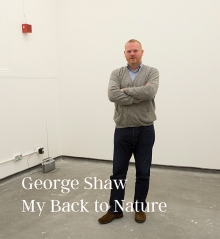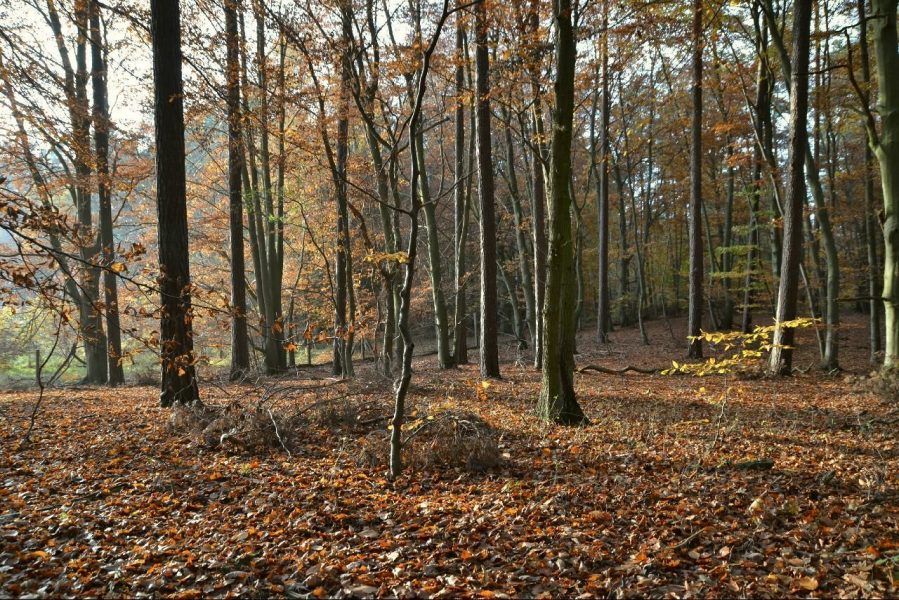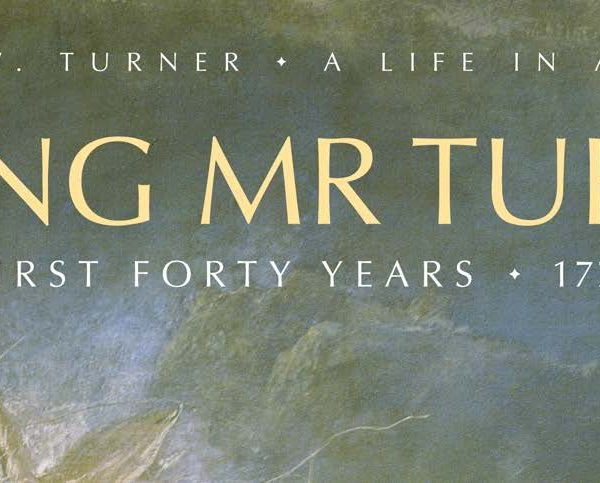A Conversation with George Shaw
A Conversation with National Gallery Associate Artist George Shaw
YaleBooks: In the introduction to your show’s catalogue, Colin Wiggins describes how, as a teenager, you had already formed ‘a deep relationship’ with the National Gallery collection. Has this relationship evolved during your two and a half years as associate artist at the gallery?
George Shaw: Coming to London as a kid to look at art was always framed by the hour you had to leave and go back home. It was never very relaxed and you had to grab what you could and take it home to think about it. Even as a grown up I find looking at paintings in galleries an uncomfortable experience. There are too many people and too many other distractions for me to concentrate on the work on the wall. At times I’d get more out of looking at a catalogue on my own sat in the corner of a pub or in my bedroom. Being the Associate Artist meant that I had access to the collection without any distractions or interruptions. I was able to develop a relationship with certain paintings over a long period of time. And it was with the paintings themselves and not a reproduction in a book. I felt very close to the physical thing that a real person had made. In some senses the collection became an extension of the studio and the works of Rembrandt or Constable became less like old masters and more like the work of artists I knew and respected and could have a chat with.
‘The works of Rembrandt or Constable became less like old masters and more like the work of artists I knew and respected and could have a chat with.’
YaleBooks: Woods and forests appear as a source of inspiration in your work, from the ‘neglected woodland’ of your childhood home, to painted woodland scenes by Bellini and Constable. Do you envisage the development of this theme in future projects?
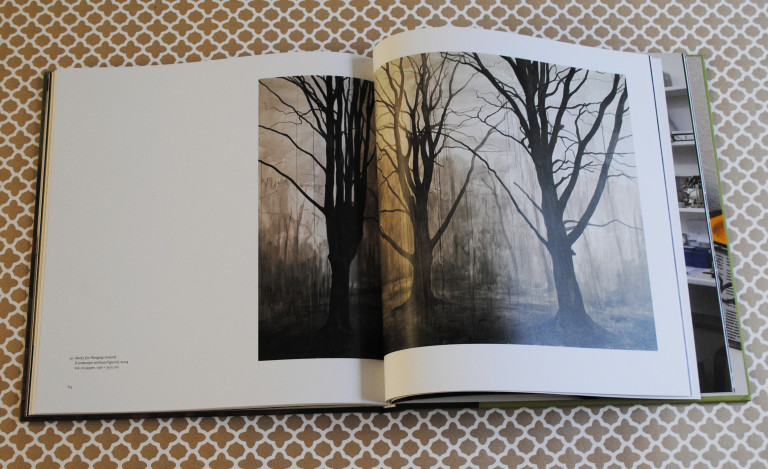
George Shaw: To be honest that ‘theme’ has appeared in my work quite a few times over the last few years. My degree show at the Royal College in 1998 was nothing but paintings of the woods and for an exhibition at Wilkinson Gallery in 2009, called The Woodsman, I exhibited six large charcoal drawings of the same woods showing trees in various states of decay. My time at the National Gallery allowed me to explore the allegorical potential of this familiar landscape and present it within a context of the mythological, the sacred and, dare I say it, the erotic.
YaleBooks: Song lyrics from The Cure and The Smiths appear in the catalogue. Have poetry and music always had a place in your artistic practice? Do you listen to music whilst working?
George Shaw: Poetry, music, literature, cinema all has a place. Not just in what I do as an artist but as a human being. They make up most of what I am. I don’t like to divide things up into categories. For me it’s all art. And I don’t care if it’s pop music, or classical music or painting or folk art or TV or whatever. If it’s good or it touches me I’ll let it in. Sometimes I have no choice; it will become part of me without my consent.
I do find music too distracting when I’m working. It would be like reading when I’m working. I’m no good at doing two jobs at once. I don’t see the point. If I’m priming or doing something tiresome and laborious in the studio I will put music on. I prefer silence or spoken radio (a play or a documentary) when I’m painting. It’s usually quite low in volume too. Hardly there at all. It sounds like air conditioning or voices from another room. At the end of the day when I’m sat in the studio having a beer or two I’ll put music on. But I will also dance. And I can’t do that and paint either!
YaleBooks: You describe paintings as vampires: ‘They stop time but go on living. They live by sucking the blood of the living. And we go on letting them, seduced and abandoned and forever haunted’. Is there one painting that particularly evokes this sense of being ‘haunted’?
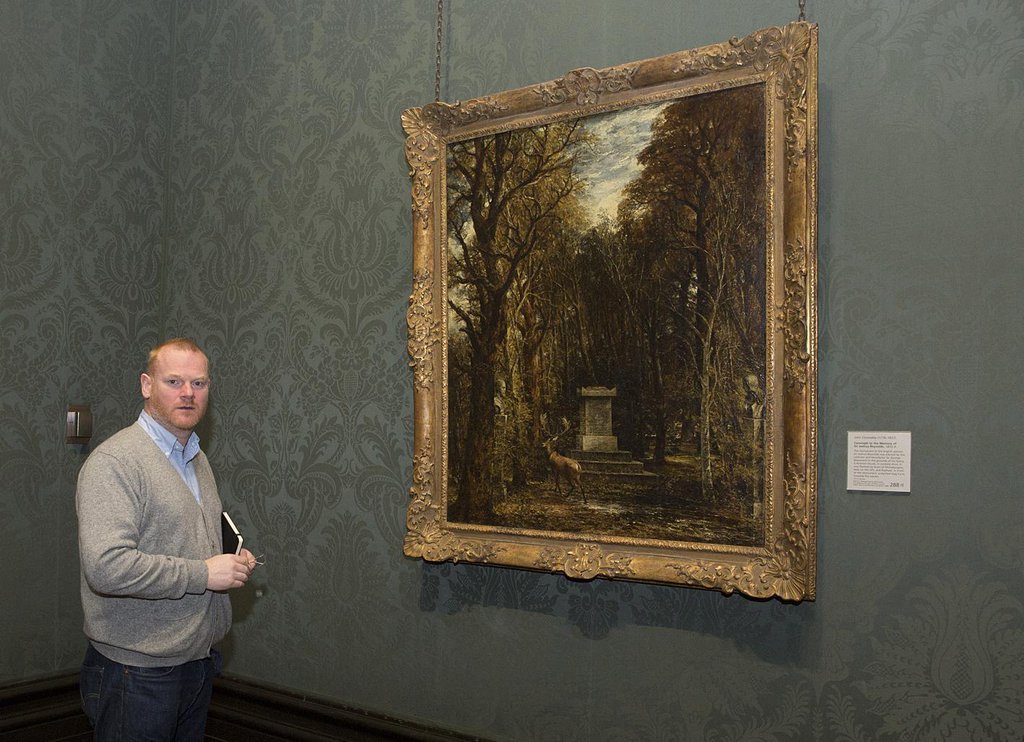
George Shaw: Constable’s Cenotaph is the one that comes to mind. Not only is the painting of an eerie place and of an uneasy subject but also the way in which it is painted prevents the painting from slipping away into amnesia. To quote Elvis, it’s always on my mind. It never rests in any peace. The surface looks as if the painting has been exhumed. Constable has this curious sketchy almost scabby way of applying and scraping away paint that, in his finest work, is at its most abstract and yet somehow describes an exterior reality with uncanny accuracy. It’s always a surprise to me to find how much space opens up within this painting considering how much surface there is. Rembrandt’s late self-portrait stares out at me as if someone has returned from the grave. It provokes me to put my finger in its wound. The painted surface seems to move as if beneath the skin blood still slowly circulates, an eye is on the edge of watering, the mouth about to moisten. But this is all possible as a painted surface, a trick of light and colour and texture. Such paintings as these appear as apparitions between the canvas and myself, ghosts with messages and meanings I spend my life deciphering.
YaleBooks: Do you have any advice for aspiring artists?
George Shaw: Keep aspiring…
George Shaw is the ninth Rootstein Hopkins Associate Artist and Colin Wiggins is special projects curator at the National Gallery, London.
Further Reading:
